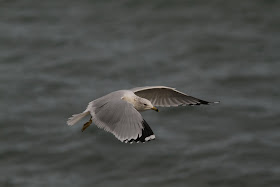 Common Buzzard
Common Buzzard
 Blackcap
Blackcap
 Starling
Starling
 European Robin
European Robin
Azorean Chaffinch
This morning was the last day for me- although Simon stayed for another day and there is a steady flow of observers twitching the heron over the next few weeks.
Of course it is not all rare birds on the Azores- in fact I worked out today that based on estimates from this trip- 1% of birds on Terceira (the east side of the island) are american vagrants. Here is the rough estimate:
Palearctic Migrants and vagrants
Black-headed Gull (500+), Lesser Black-backed Gull (100+), Mediterranean Gull (4), Common Gull (5), Common Teal (40), Tufted Duck (10), Eurasian Wigeon (2), Common Coot (8), Common Moorhen (6), Grey Heron (2), Little Egret (15), Greenshank (2), Spotted Redshank (1), Wood Sandpiper (1), Sanderling (50+), Turnstone (30+), Ringed Plover (10), Black-tailed Godwit (9), Little Stint (1), Common Sandpiper (1), White-winged Tern (1), Greylag Goose (3), Pink-footed Goose (1), Great Northern Diver (1) (Total 803)
Palearctic residents
Azorean Gull (1500+), Kentish Plover (20+), Starling (500+), House Sparrow (500+), Blackcap (50+), Atlantic Canary (200+), Azorean Chaffinch (200+), Robin (30+), Woodpigeon (300+), Feral Pigeon (100), Blackbird (30+), Cory’s Shearwater (50+), Common Buzzard (10+), Quail (10), Grey Wagtail (15), Goldcrest (5), Goldfinch (30+) (Total c3550)
Holarctic (either the Palearctic or Nearctic)
Greater Scaup (1), Slavonian Grebe (1), Sandwich Tern (1), Dunlin (4), Knot (5), (12)
Nearctic Migrants/vagrants
Ring-billed Gull (30), American Herring Gull (2), Lesser Scaup (1), Bufflehead (1), Ring-necked Duck (3), Blue-winged Teal (1), American Coot (1), Lesser Yellowlegs (2), Greater Yellowlegs (1), Semipalmated Plover (2), Spotted Sandpiper (1), Great Blue Heron (1), Yellow-crowned Night Heron (1), Pied-billed Grebe (1), (48)
That gives us 4353 Palearctic birds to 48 Nearctic birds and 12 either/ors.


































